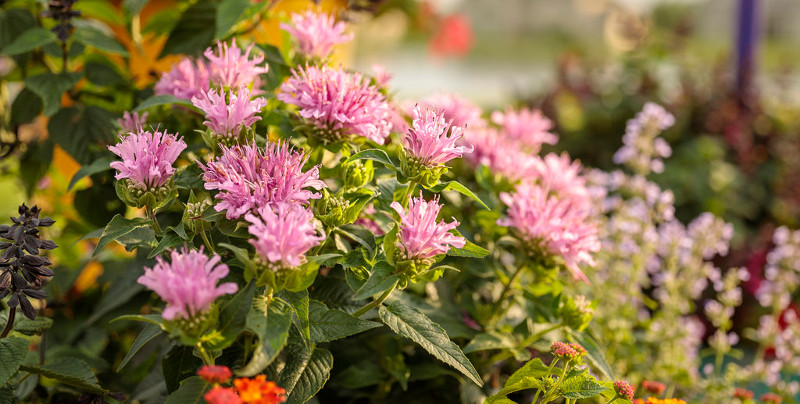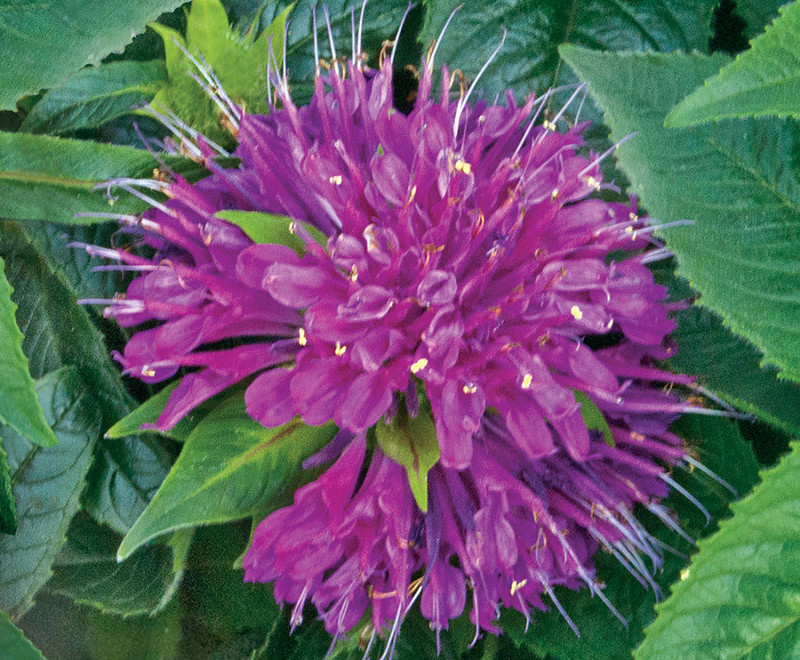Bee balm (Monarda) thrive with full sun and soil that drains well. Well draining soil helps with air circulation, keeping mildew and weeds under control. Bee balm is drought tolerant, but needs a regular watering schedule. It is best to keep the soil evenly moist, yet not too wet.
Avoid overwatering as it could result in root rot. Allow the soil to dry out a bit between waterings and not get soggy. If you notice that the leaves of the plant are drooping, it is telling you that it needs watering.

How to Tell if Bee Balm Needs Watered
Despite being drought tolerant, bee balm will grow best with even moisture. Lack of water can cause leaf curl, brown leaves, or scorched leaves. A drought stressed bee balm will have slower root growth, smaller leaves, and less blooms.
The first sign that your bee balm is in trouble will be drooping leaves. Unless you are getting regular rainfall, water the plant with at least an inch of water per week. As with most plants too much watering can cause root rot, mildew, and disease. Evenly, moist soil is optimal.
How Often To Water Bee Balm
Bee balm plants prefer evenly moist, well draining soil. When newly planted, it needs to be thoroughly watered. Too dry of soil can weaken the plant when it is trying to establish itself. During the first year of growth, regular watering will be important to help develop a strong root system.
Once established bee balms benefit from watering once a week. Soaking the soil 6 to 8 inches deep is recommended. During exceptionally dry periods, watering twice a week may be needed. Applying mulch around the plant will help to keep the plant from drying out too much. Consider the rainfall in your area when deciding whether to or not to water bee balm.
If the bee balm is growing in a container, water it when the top inch of soil feels dry. During the fall and winter, provide just enough water so the soil is not completely dried out.

Best Time To Water Bee Balm
We recommend that you water bee balms in the morning or early in the day. Morning watering will allow the leaves to absorb the moisture throughout the day. Evening or overnight watering will not give the plant time to dry out which can cause disease to develop.
Summer months require weekly watering. Winter months do not. In fact, watch your area during the winter. Soggy soil can prevent the roots from breathing and drown bee balm.

How to Water Bee Balm
Step 1 - Keep soil evenly moist
Too dry of soil can create a powdery mildew and weaken the plant
Step 2 - Water every 7 -10 days
One inch of water a week. Refrain if getting regular rainfall.
Step 3 - Soak the soil 6-8 inches deep
A slow soaking watering at the base is best. Avoid watering the leaves.
Step 4 - Mulch around the plant
A thin layer of mulch helps preserve moisture and control weeds
Bee Balm Watering Tips
- Plant in well drained soil
- Keep soil evenly moist throughout the summer months
- Water weekly
- Avoid overwatering
- Water the base of the plant only
- Watch for wilted or curling leaves
- Monitor for powdery mildew on leaves
Plants We Recommend
 |
Author Chris Link - Published 01-15-2021 |
